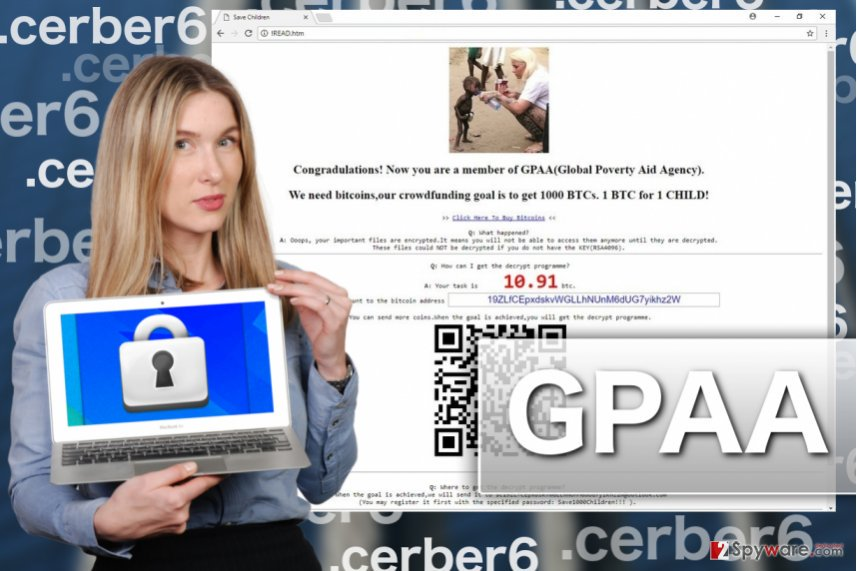But it is a standard crypto-threat, which uses a lie as an attempt to convince users to “donate” an absurd amount of money and help the impoverished.
In order to remove this malicious virus from your system then download free malware removal tool and remove the desired virus in easy steps.
The GPAA Ransomware is a malicious computer virus that seeks to encrypt sensitive user data on the victim’s computer. All managed files are renamed with the. cerber6 extension and the victims are blackmailed to pay a large ransom fee.

How does GPAA Virus get into the computer?
- Email spam messages are one of their primary strategies-here the hackers send out templates that look like legitimate and well-known companies or government institutions sending out emails for financial help but in reality, the GPAA ransomwaresamples are attached, which once clicked open will be easiest way for this ransomware to get into your computer.
- The presence of the GPAA virus code is in the infected documents or software installers used by the hackers to send a ransom note.
- This malware is also circulated on hacked or hacker-controlled download sites.
- P2P networks like Bit Torrent.
- GPAA Ransomware scan network shares, local drives, and portable media storage for targeted file types.
What happens post this Malware enters your PC?
- Once infected with this ransomware GPAA virus it renames encrypted files using the “[16_random_characters].cerber6” pattern. For instance, “sample.jpg” might be renamed to a filename such as “GHl3_pl8ant3HAE-.cerber6” or similar. Once files are encrypted, GPAA creates an HTML file (“!READ.htm”), placing it in each folder containing encrypted files.
- GPAA’s HTML file contains a message notifying victims of the encryption and making ransom demands.
- The GPAA Ransomware is programmed to modify the structure of data containers associated with Microsoft office, Amazon Kindle, Adobe Acrobat Reader, MySQL, Windows Photo and Media Player Classic.
How does the GPAA ransomware looks?
The website shows a photo of Anja Ringgren Lovén (founder of the African Children’s Aid Education and Development Foundation) giving water to a malnourished child. Once you click on this website, it states that the victim is now a member of a ‘charity agency’ that supposedly gathers money to help starving children and its goal is to raise 1000 Bitcoins. This is a scam – the “Global Poverty Aid Agency” does not exist. GPAA Ransomware also use the following names:
- Artemis!BF58714838ED
- Gen:Win32.FileInfector.kmGfa8hwnmfi
- HEUR:Trojan.Win32.Generic.A
- Trojan.WisdomEyes.16070401.9500.9552
- Win32/Trojan.d29
- Win32:Malware-gen
Tips to Prevent GPAA From Infecting Your System:
- Enable your popup blocker: Pop-ups and ads in the websites are the most adoptable tactic used by cyber criminals or developers with the core intention to spread malicious programs. So, avoid clicking uncertain sites, software offers, pop-ups etc.
- Keep your Windows Updated:To avoid such infections, we recommend that you should always keep your system updated through automatic windows update. By doing this you can keep your device free from virus. According to survey, outdated/older versions of windows operating system are an easy target.
- Third party installation:Try to avoid freeware download websites as they usually install bundled of software with any installer or stub file.
- Regular Back up: Regular and periodical backup helps you to keep your data safe in case the system is infected by any kind of virus or any other infection. Thus always backup important files regularly on a cloud drive or an external hard drive.
- Always have an Anti-Virus: Precaution is better than cure. We recommend that you install an antivirus like McAfee or a good Malware Removal Tool like Free Malware RemovalTool. Apart from this we would suggest a regular updating of these software to detect and avoid latest infections.
- Install a powerful ad-blocker for Chrome, Mozilla and IE.
